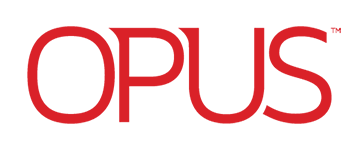A successful hybrid working communication system is underpinned by a clear strategy aligned with your organisation’s business objectives
From Microsoft Teams to Skype and Zoom, numerous hybrid working communication systems exist to support flexible working practices. Many businesses have been using them since the beginning of the first national lockdown to maintain communications, enable collaboration, and keep their organisations running when fully remote. But hybrid working is not a fully remote scenario. Nor are many businesses expecting it to be short-term.
CMI research shows that the majority of managers (80%) are already working in a blended approach (where between one and four days a week are on-site and the rest is remote). As we emerge from the pandemic, 61% of managers said they expect their staff to work in a blended fashion.” Hybrid working: now for the reality…, CMI
Our working practices look to have changed for good. This means that if businesses want to maximise performance and remain competitive, they will need to re-evaluate their systems to determine how they’re being used and whether or not they’re still fit for purpose.
Hybrid working poses entirely different challenges from fully remote workforces. Which hybrid communications solutions should you consider to help your organisation overcome them — and is there another side to the solution that you might not have considered yet?
Hybrid working is here to stay. Can you say the same for your solutions?
“When the shift to remote working came, businesses throughout the UK reacted admirably to leverage their technology and keep communications flowing, but one area they couldn’t replicate were more informal conversations”, explains Opus Sales Director Matt Dudleston. “Scheduled video calls and virtual meetings are not the same as overhearing a conversation in passing and being able to offer your colleague advice or support, or interactive strategy sessions. As many businesses will know, this is often when the best ideas are generated.”
Over the course of the national lockdowns, these shortfalls were not a priority compared to focuses such as employee wellbeing and remote productivity. Now, with hybrid working looking like it will become a staple of modern working practices, businesses need to consider how they will adapt their operations to facilitate this knowledge-sharing.
“We all had to facilitate working from home very quickly and the view at the time was that it wouldn’t need to be for very long. Instead, work practices have fundamentally shifted because of the habits we’ve built and the experiences we’ve had during the pandemic. To begin with, many businesses implemented the equivalent of ‘band-aid’ solutions on the understanding that in the near future, work would return to normal. That hasn’t happened and now organisations are finding they need systems with more flexibility.”
As Matt goes on to explain, he is having conversations with several customers whose primary objective right now is trying to understand which kind of hybrid frameworks will best deliver that flexibility for their businesses.
The strategy behind your hybrid working communication systems
“I recently had a conversation with a financial services business to define what their hybrid working framework looks like and under what scenarios they’re going to get the most out of their teams”, Matt reveals. “What they’re considering is making innovative/strategic sessions in-person, office-based interactions, as these are difficult to replicate using technology. Conversely, many of their team’s day-to-day tasks can be carried out remotely using the technology they already have in place.”
For those instances when remote work is appropriate, hybrid working communication systems will still play an important role. “We have a dynamic range of products across the board and our product suite doesn’t pigeon-hole customers into one area, which is quite common elsewhere across the market”, explains Ben Murphy, Sales Manager at Opus.
“If we look at our product stack across Mitel, 8×8, Microsoft Teams and Gamma, for example, there is a wide variety of potential solutions. That allows us to really consult with the customer on what they need, recommend the best-fit system that will solve their challenges — if a new system needs implementing at all — and explain to them how it is going to fit in with their wider business strategy, such as how best they should use it.”
Communication systems won’t solve hybrid working alone
Software as a service (SaaS) technology such as unified communications (UC) and collaboration platforms will be key to solving the hybrid working puzzle, but they won’t solve it alone.
The real puzzle is in figuring out which hybrid model will work for your business and creating an IT strategy that enables that. There isn’t a one-size fits all solution. The hybrid working framework that works for your business will likely be unique to it.
“Every business is different”, Matt stresses, “which is what makes our consultative approach so important — and so valuable. “Your strategic meetings might be better delivered in the office, in which case we might recommend a room system to support an in-person meeting of up to 20 people, where they can collaborate both internally and with remote colleagues. The same recommendation might not apply to another business from a different industry. It’s about giving organisations flexibility and choice.”
“The strategy that many businesses will have had in place pre-pandemic won’t be effective anymore”, Ben adds. “The last 12 months have exposed all the leaks in the pail and a new strategy is needed for businesses to move forward. This is where they’re best placed to start getting help, to understand what others in the market have been doing and what their options are in order to adapt long-term and remain competitive.”
Define your hybrid working strategy and software with Opus
Though the environment in which we’re all working has changed, our approach at Opus remains the same. Whenever we speak with a new prospect or customer, our method is consultative, tailored around understanding their challenges and business outcomes.
“We’re always looking to understand what the customer is trying to achieve”, Matt explains. “It might be that they want to facilitate more hybrid working in order to reduce the office square footage. So the business outcome becomes about reducing overheads by leveraging technology and our recommendations will focus on those strategies and technologies best suited to deliver upon those outcomes.”
Reducing real estate costs is just one way we’re helping organisations to save more by embracing hybrid working models. The cost of shadow IT and solutions that are not geared to deliver long-term efficiencies is sky-rocketing. “We’re speaking with businesses at the moment where they’re using multiple different tools across the organisation to get the outcome they need”, Ben adds. “In the short-term, these tools provided essential functions that outweighed their costs. Now, the money that’s being spent on them and what the organisation is getting back isn’t effective in the long run.”
Opus has been helping organisations to align their technology with their business strategies since 1992. The shift to hybrid working, while seismic, is just the latest iteration of the workplace around which organisations need to adapt their systems and processes. We can draw from a huge amount of experience to help you achieve that.
“It might be that your existing solutions are actually fit for purpose”, Matt explains. “Whether you’re best served by adopting new systems or simply leveraging your existing technology suite in different ways, we’ll be able to determine that once we’ve understood your business outcomes and what it is you’re trying to achieve. And where there are gaps in your technology roadmap, we can recommend the right solution to help.”
Hybrid working is not just about setting up technology to enable people to work anywhere, but defining when it’s appropriate for people to work remotely vs in the physical office. What does your hybrid working strategy look like and can you map it to your technology needs?


